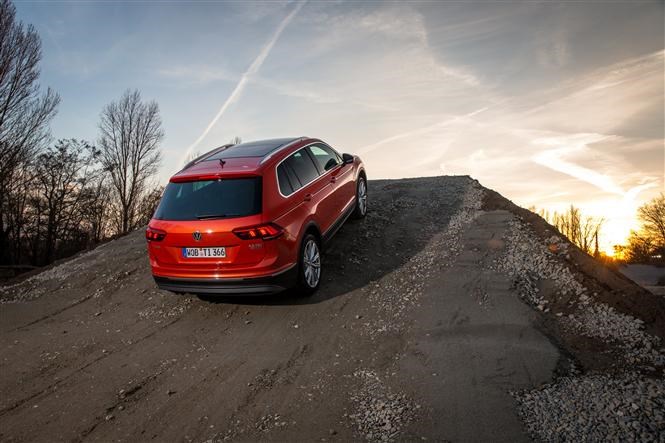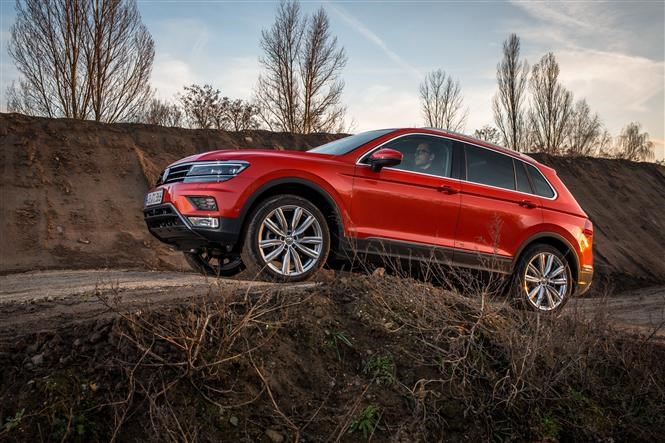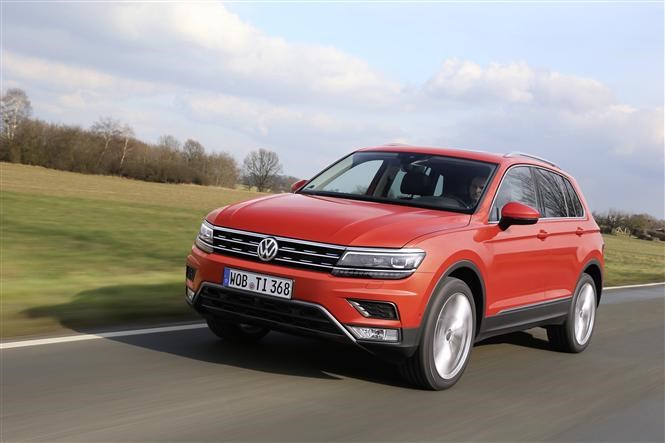Sharper looks, a higher quality, roomier interior and more efficient engines are just some of the key elements which are set to make the second-generation Volkswagen Tiguan a success.
Capitalising on its predecessor’s positive image and strong sales record – more customers bought Tiguans in 2015 than in any previous year – the newcomer is expected to be a major player in the very popular, and growing, mid-sized SUV market.
There’s an array of talent the Tiguan’s up against, of course: not only must it tackle mainstream rivals such as the Ford Kuga, Hyundai Tucson, Kia Sportage, Renault Kadjar and the omnipresent Nissan Qashqai, its near-premium positioning allows it to square up to the BMW X1 and Mercedes-Benz GLA.
Tough-looking SUV focuses on comfort
It’s no surprise to learn that the Volkswagen Tiguan’s underpinned by its parent company’s modular architecture, a version of which is also employed by the forthcoming SEAT Ateca and Skoda’s larger SUV, expected to be called Kodiaq. VW engineers also confirmed that a longer, seven-seater version of the Tiguan is in the pipeline.
Consequently it feels surefooted and agile but not especially sporty – in many respects it feels reassuringly like a Volkswagen Golf to drive, albeit with an elevated driving position.
This time around the Tiguan’s blessed with a more rugged SUV appearance, with tauter, more perpendicular styling. It’s peppered with interesting details, like the light-catching indentations on the grille bars and the pronounced chamfering along the body, which wraps around to help frame the tail lights.

Not only is the cabin more spacious thanks to the Tiguan’s increased overall length and wheelbase, up 60mm and 77mm respectively, there’s an accompanying uplift in quality. Some of the plastics lower down the dashboard lack the same soft-touch nature of those on the upper plane, but it all feels well-assembled and the switchgear operates with a satisfyingly well-damped action.
Boot space is up at 520 litres but the rear seat can be slid forwards to increase the capacity to 615 litres. Sensibly for a car destined for family duties there are a large number of cubbies and storage slots, as well as USB and 12-volt electrical sockets front and rear.
Petrol and diesels initially, plug-in hybrid to follow
During 2016, the Tiguan’s range of engines will be fleshed out to give buyers plenty of choice between petrol and diesel.
The most powerful 2-litre TSI petrol engine will produce 178bhp, reach 0-62mph in 7.7 seconds, and emit 170g/km. Joining the petrol line-up in summer 2016 are two versions of the 1.4-litre TSI, with 123bhp and 148bhp.
All of the TDI diesels are 2-litres in capacity, with 113bhp and 240bhp versions later joining the 148bhp edition available from launch. The 148bhp version is expected to hit 0-62mph in 9.3 seconds, hit a top speed of 124mph and emit 125g/km of CO2. VW expects the diesel powerplants to account for 95 percent of UK sales.
A GTE-badged plug-in hybrid version is likely to appear during 2017.

Manual and DSG twin-clutch automatic gearboxes are available with most engines with the 4MOTION four-wheel drive option available across the range, apart from the lower-powered variants. Volkswagen expects around 75 percent of customers to take up the 4MOTION option.
The latest Tiguan’s noticeably more agile but doesn’t feel sporty to drive – comfort’s its primary goal, especially when fitted with adaptive suspension. Its steering errs towards lightness and the relaxed nature of the DSG transmissions suits the VW better, too.
Off-road it’s pleasingly capable: there’s 200mm of ground clearance on 4MOTION Tiguans – 10mm more than front-wheel drive models – and the short front and rear overhangs allow it to deal with severe inclines with ease.
Wealth of technology available
As you’d expect with a contemporary crossover, the latest Volkswagen Tiguan’s bristling with standard and optional technology.

There’s a raft of electronic safety equipment including adaptive cruise control, emergency city braking and LED lights front and rear.
You can also upscale the standard S, SE, SE Navigation, SEL and R-Line trims’ equipment rosters with a plethora of options including a panoramic glass roof, an adaptive digital instrument display and a high-quality Dynaudio infotainment system.
Volkswagen’s also further honed its Active Control system allowing you to tailor your on-road driving for comfort or firmness (Sport) depending on your personal tastes, as well as Snow and Off-Road modes when conditions are more challenging.
When can I buy one?
Orders for the new Tiguan, which will cost from around £22,500, can be placed from April 2016 with first deliveries expected in late May.
Visit again soon to find out how we rate this excellent new SUV both on-road and off with Parkers’ full Volkswagen Tiguan review.
Just so you know, we may receive a commission or other compensation from the links on this website - read why you should trust us.




